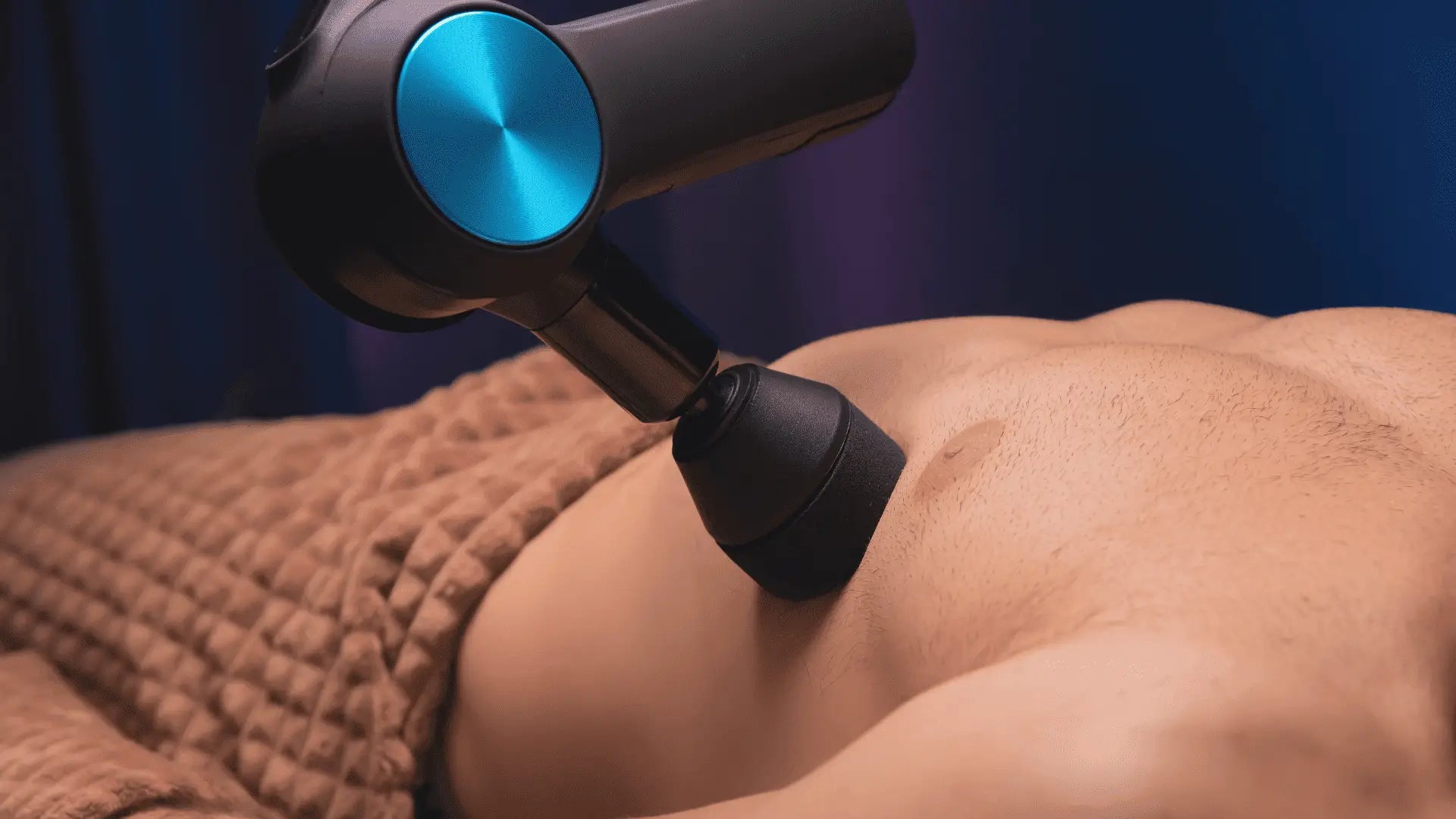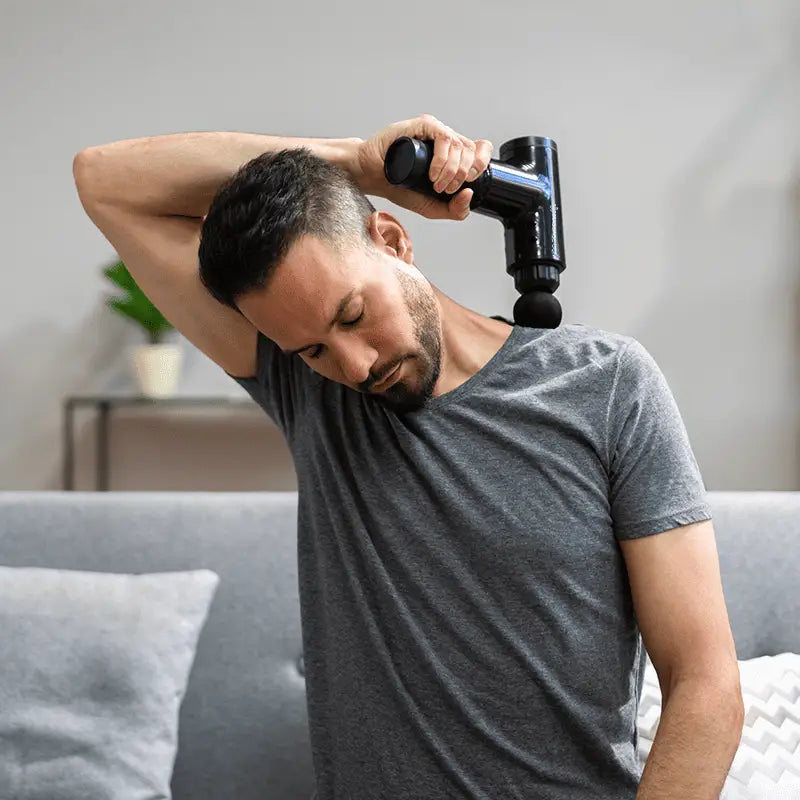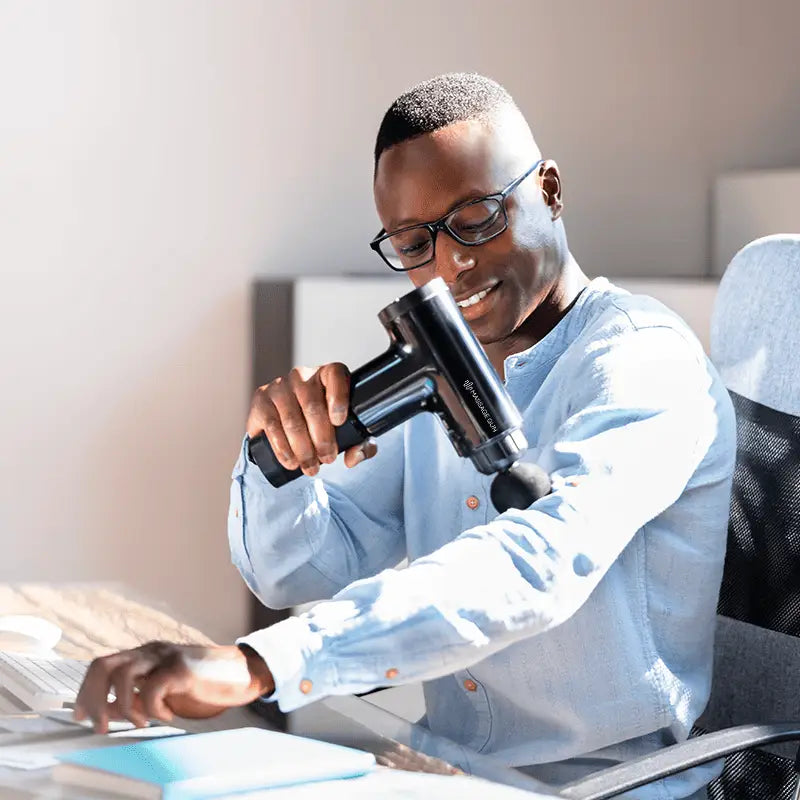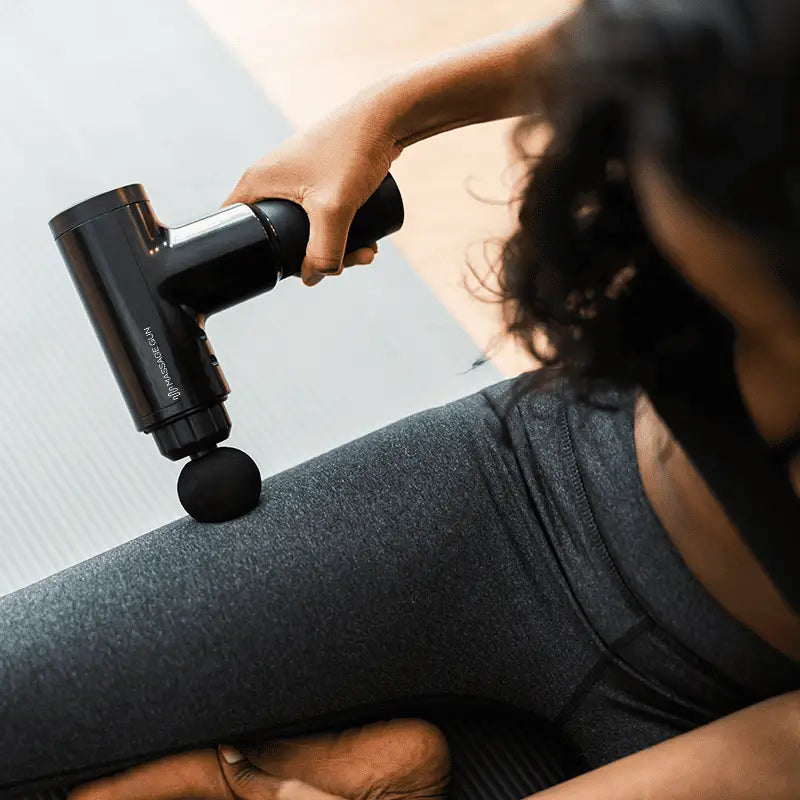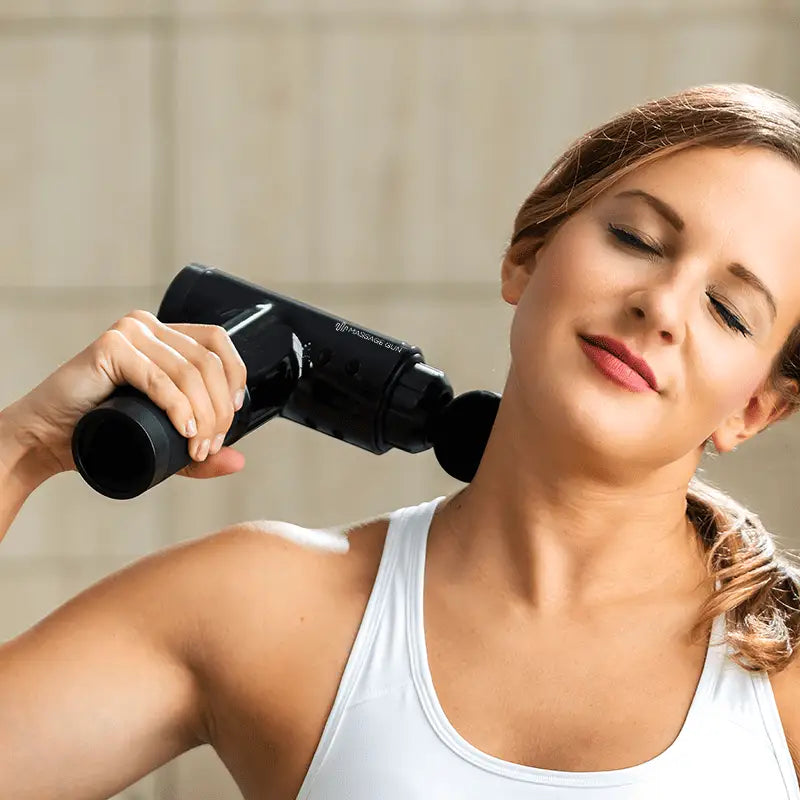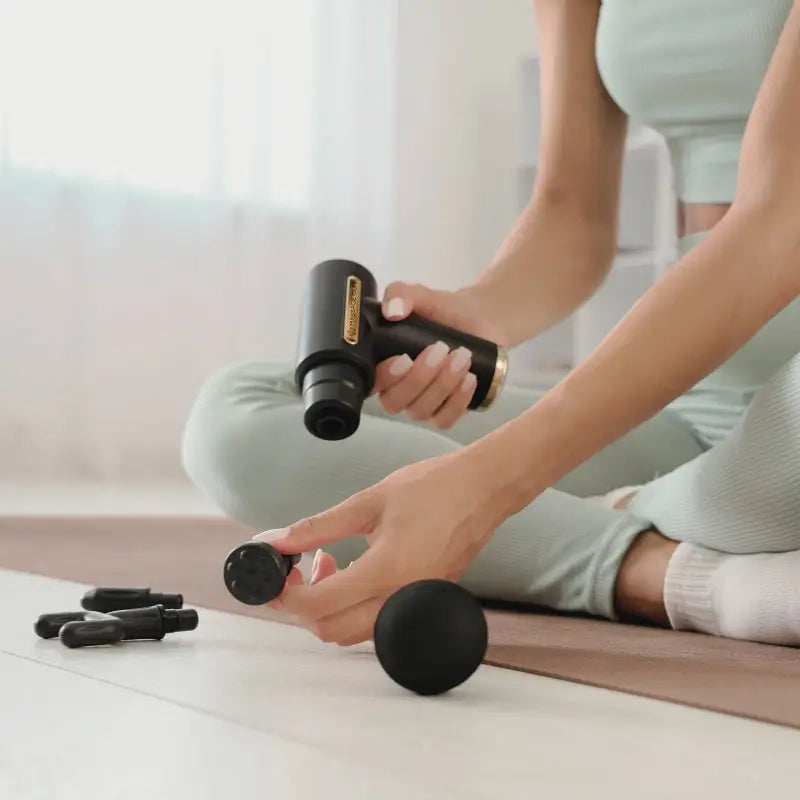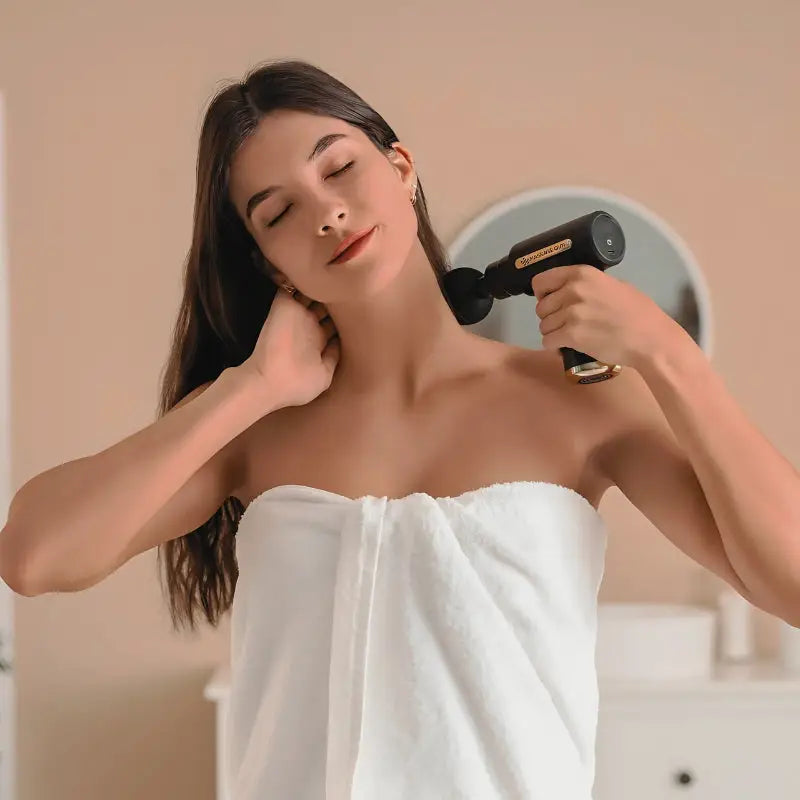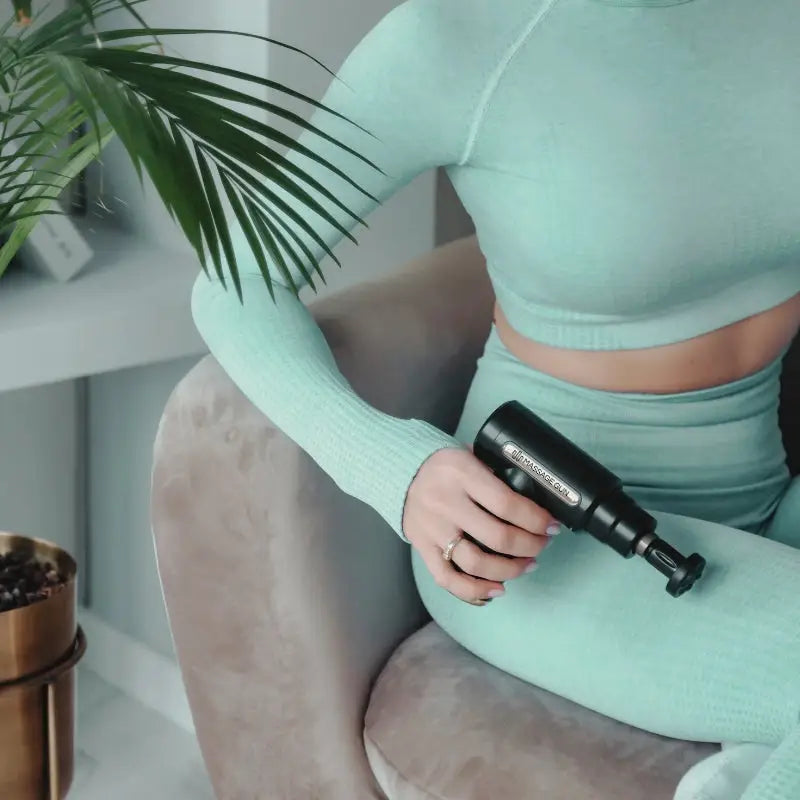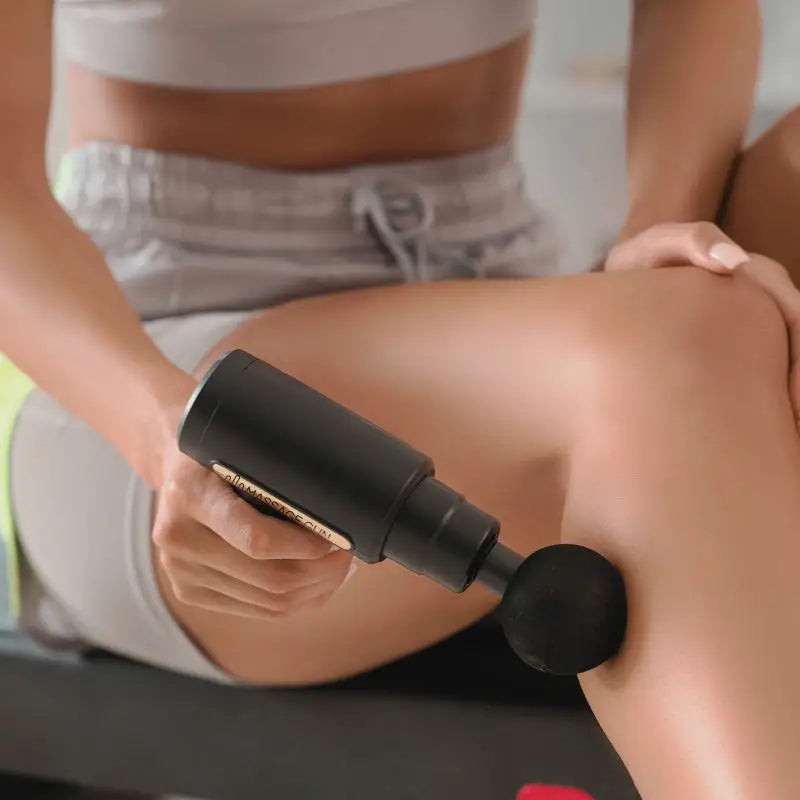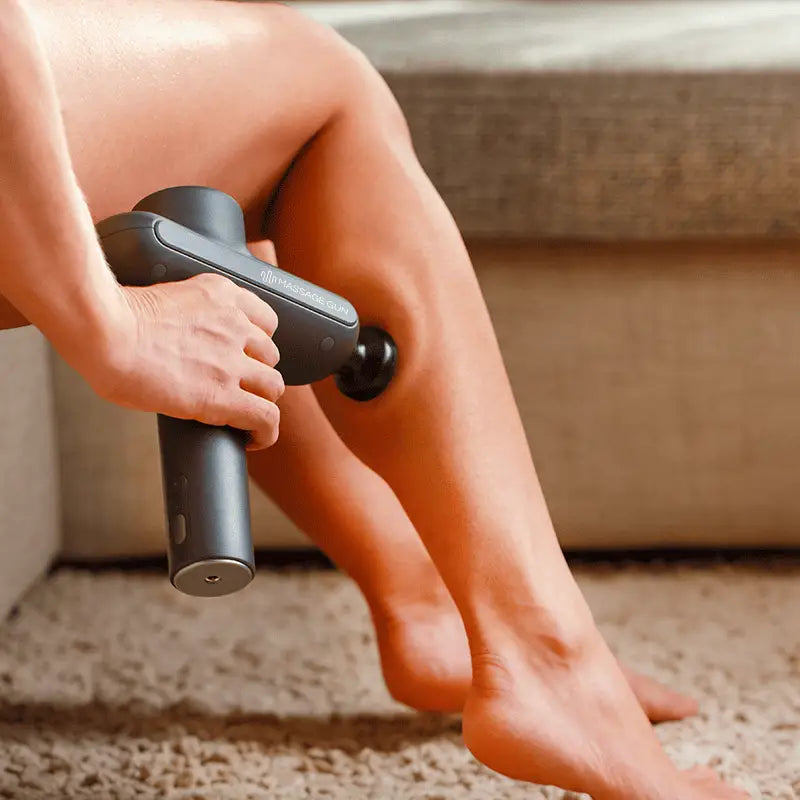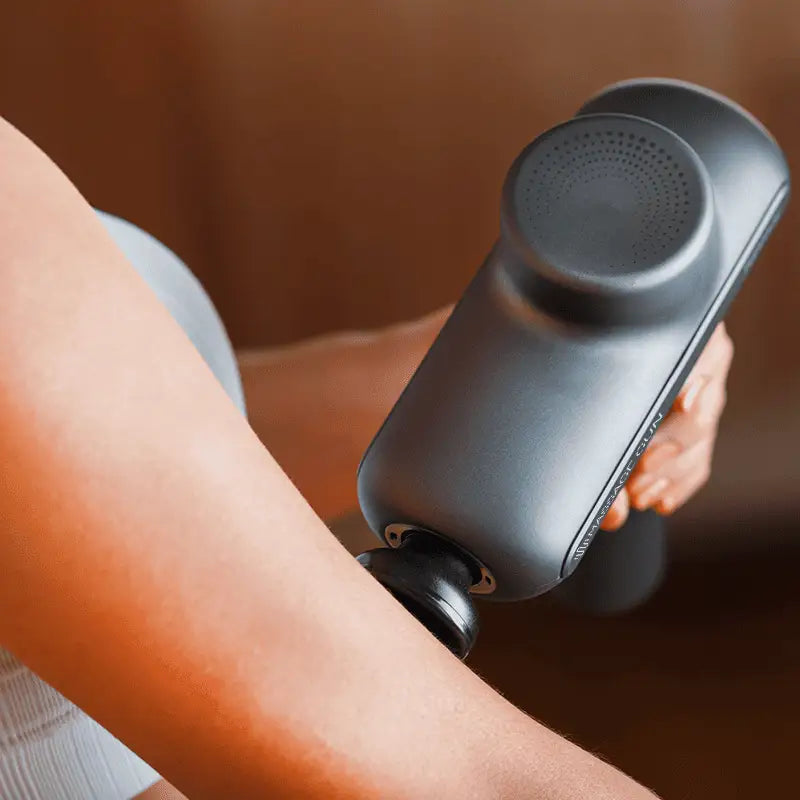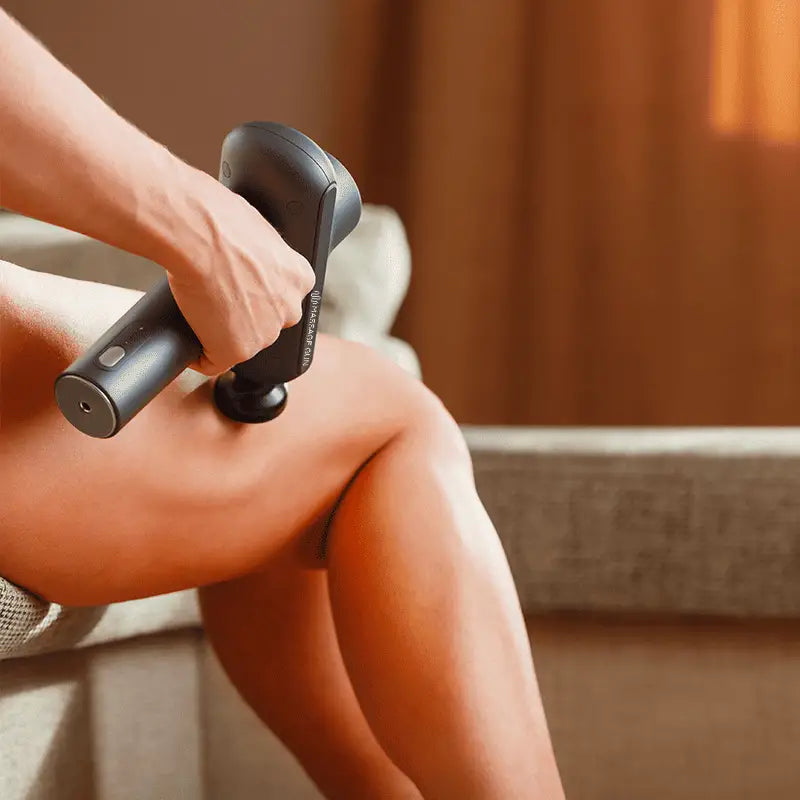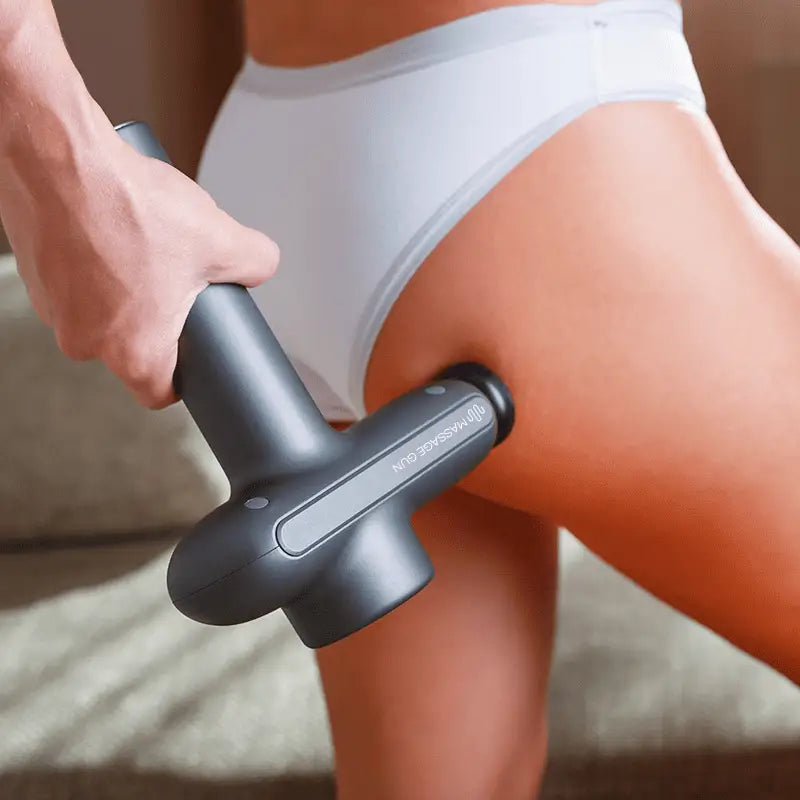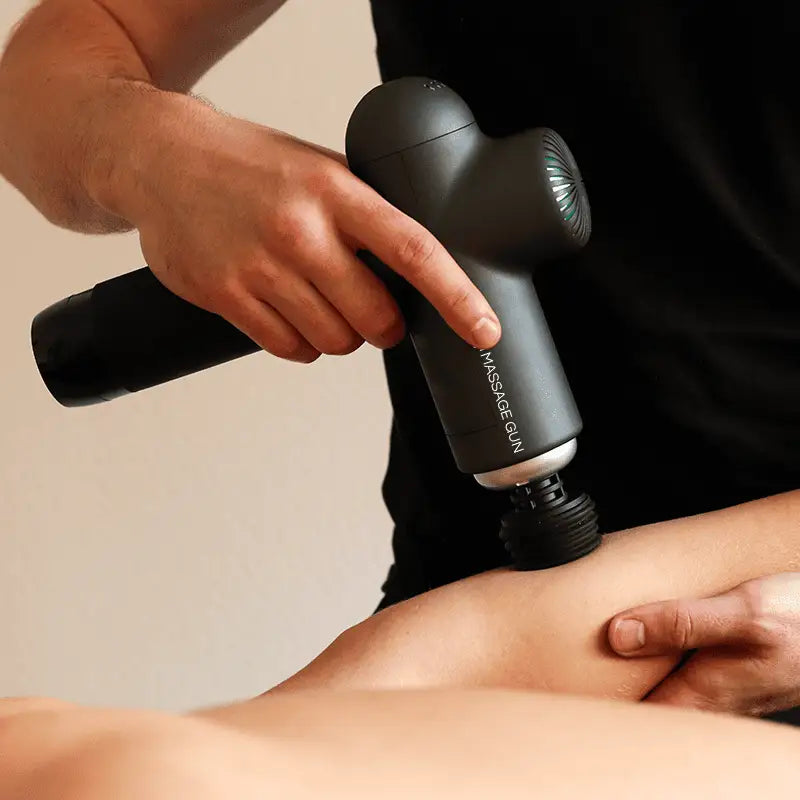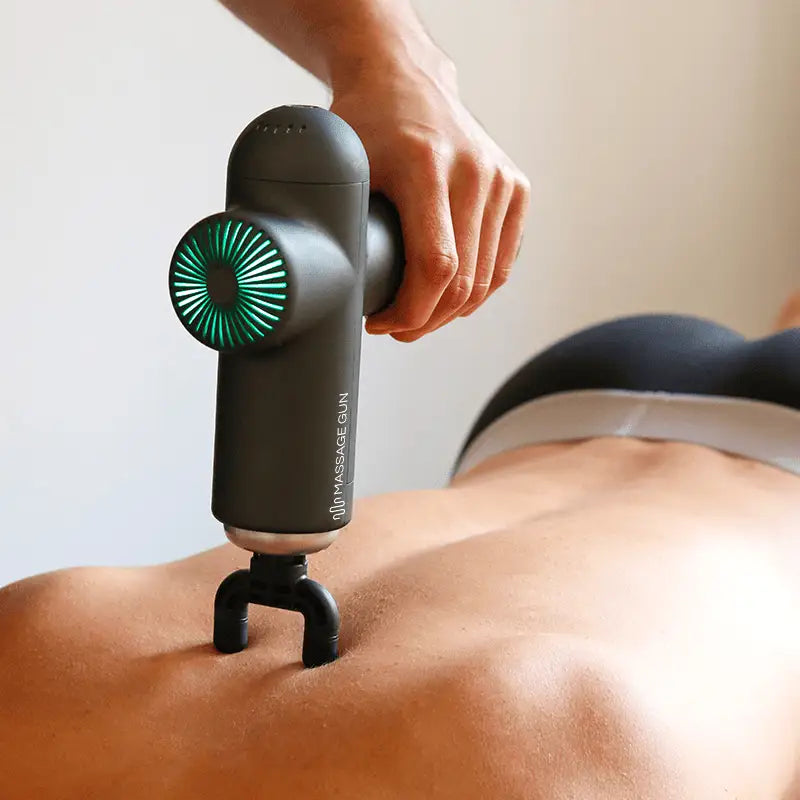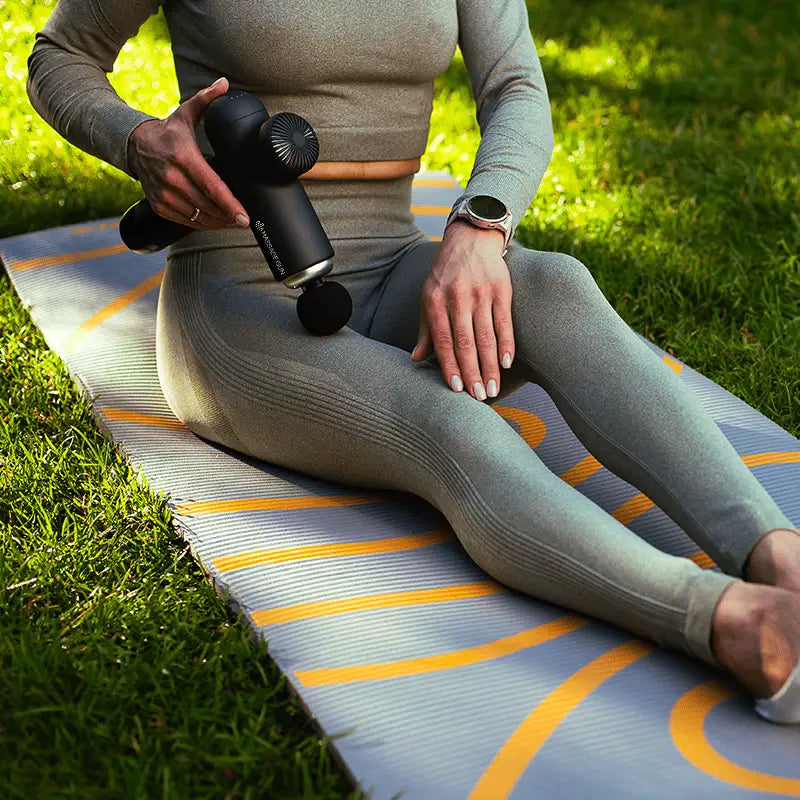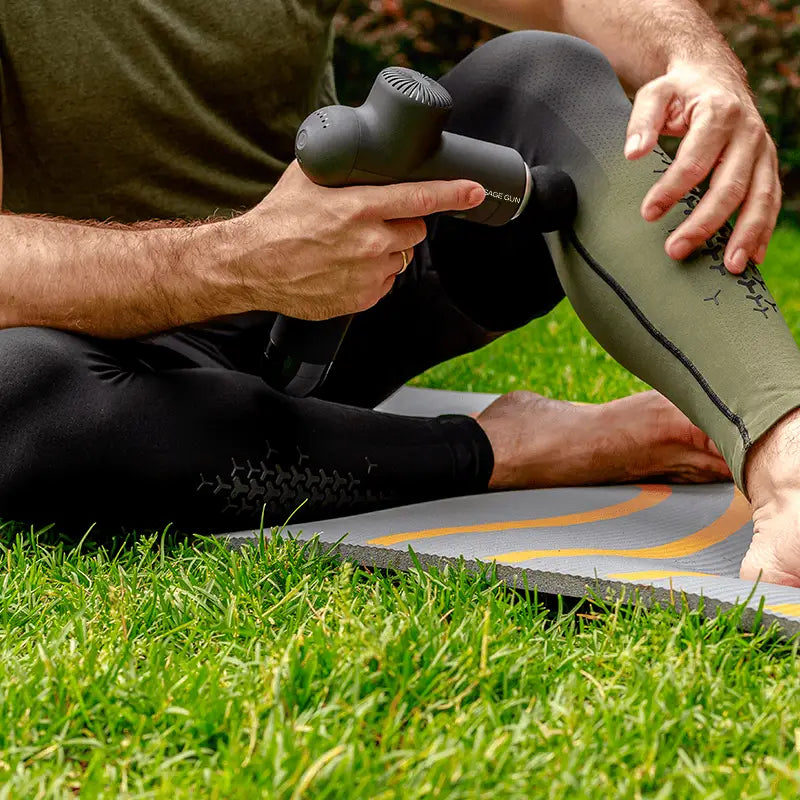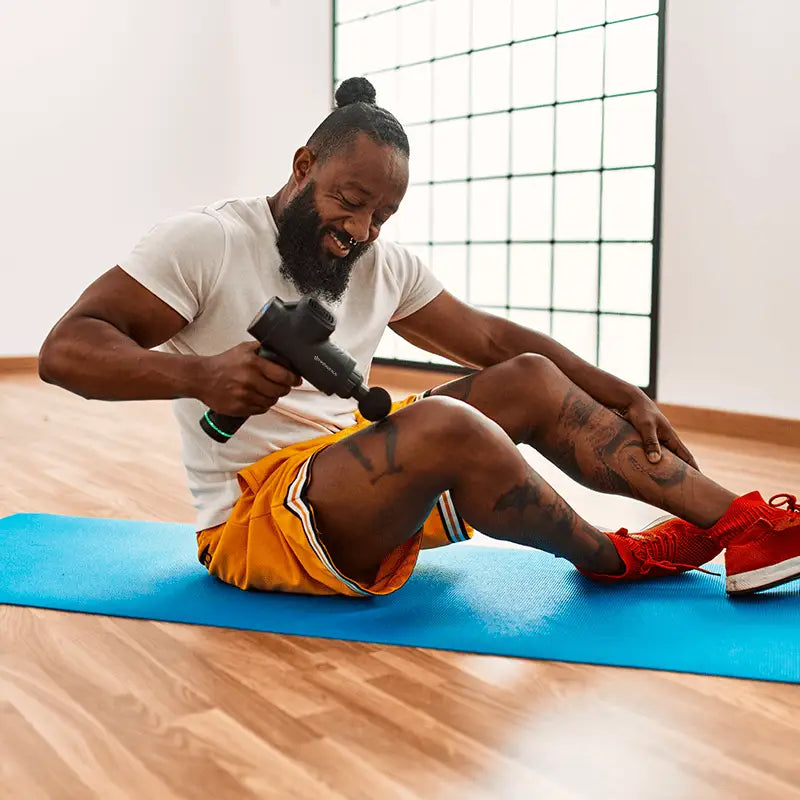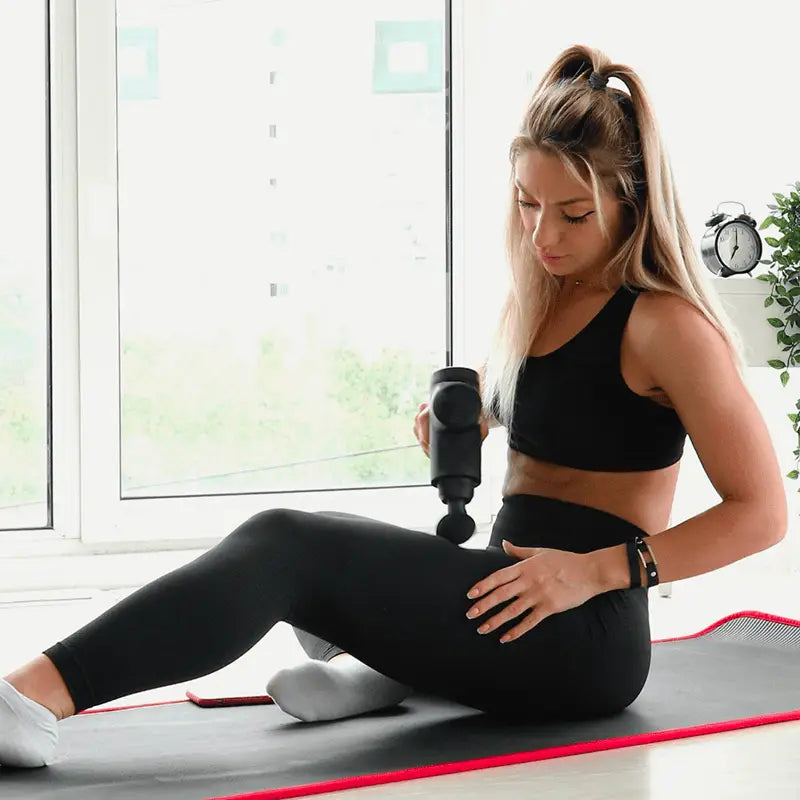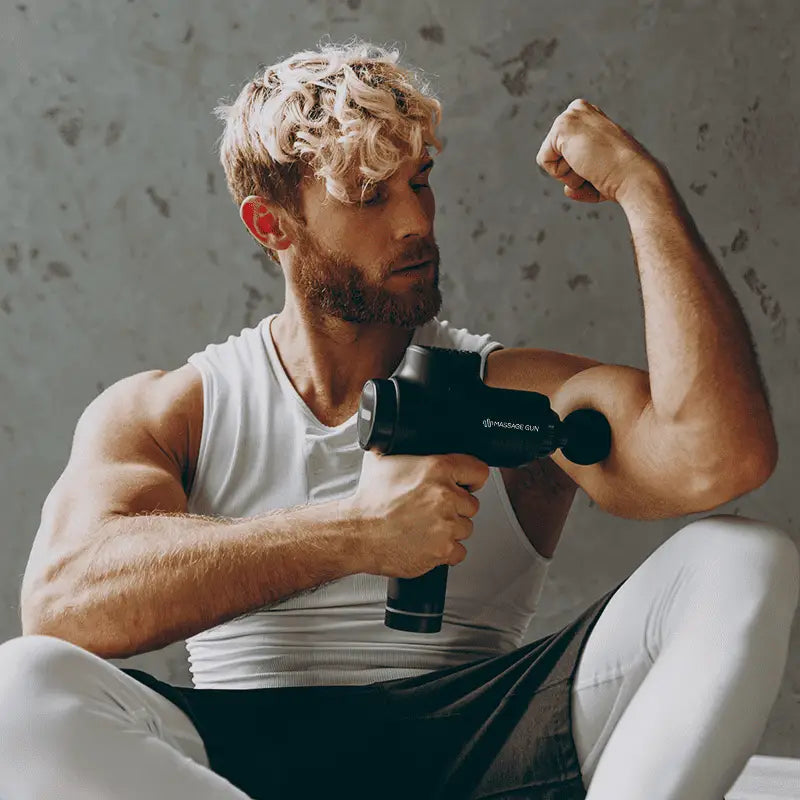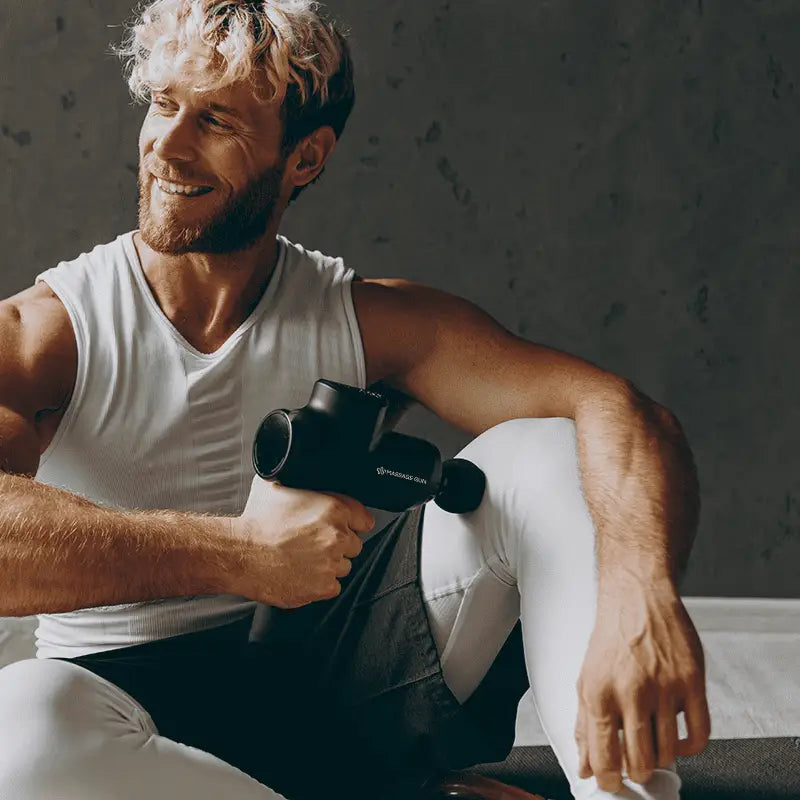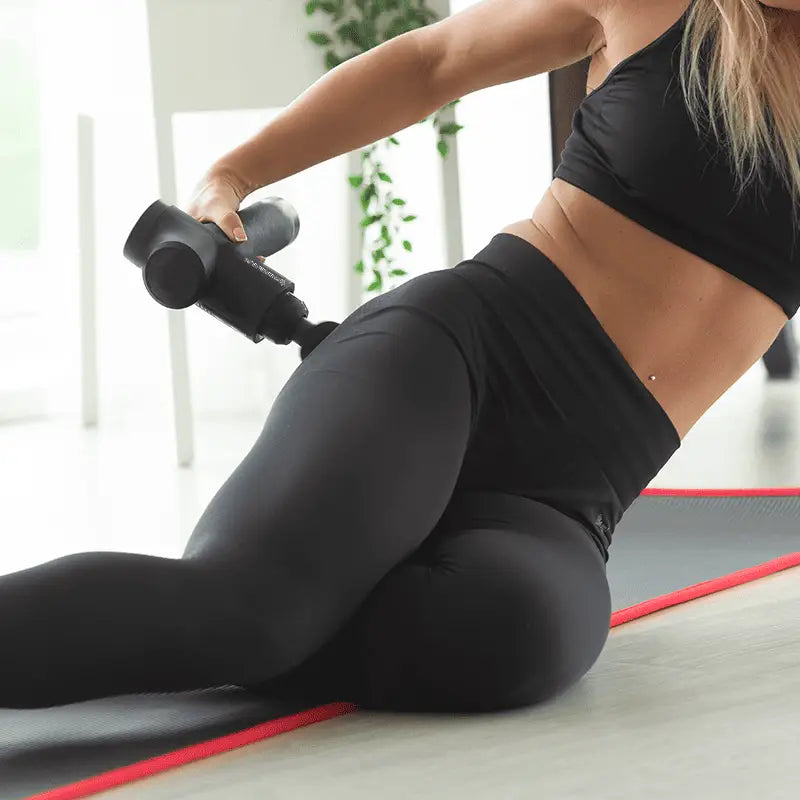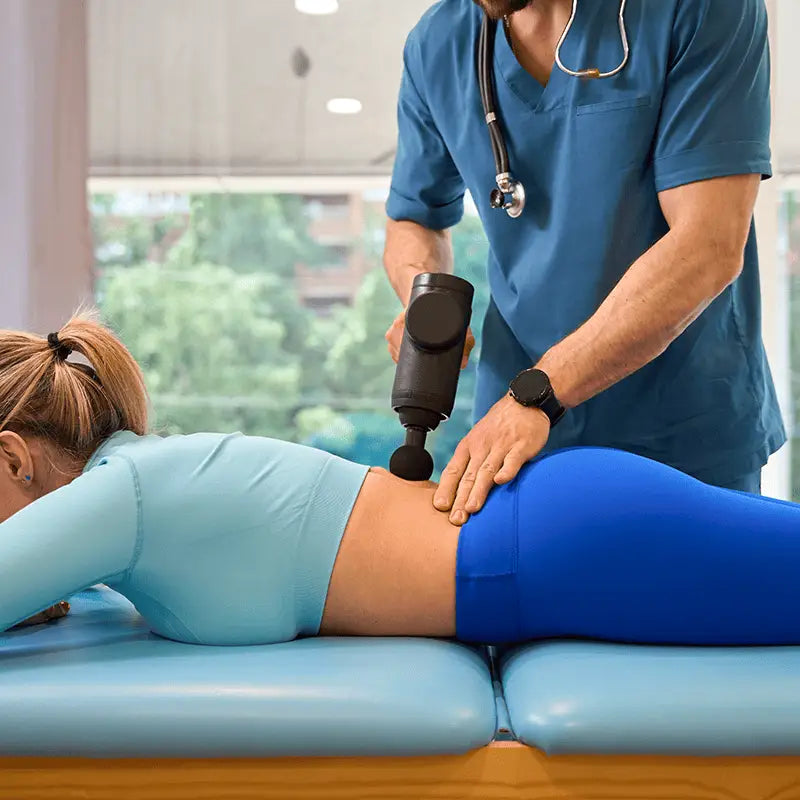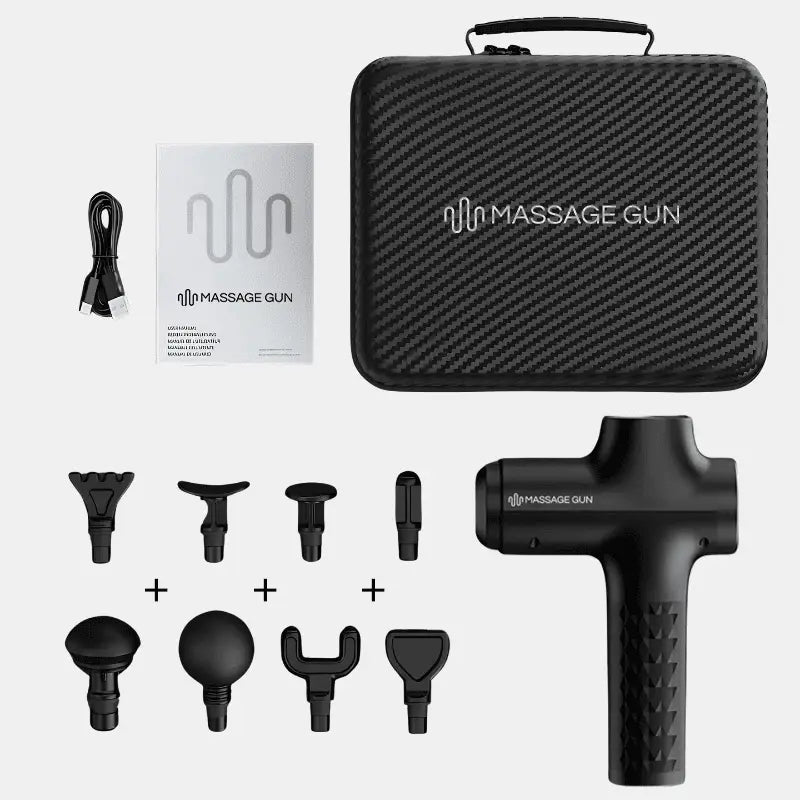L'utilisation d'un Massage Gun a gagné en popularité ces dernières années en tant qu'outil efficace pour la récupération musculaire, le soulagement de la douleur et la relaxation. Ces appareils utilisent la thérapie par massage par percussion, délivrant des impulsions rapides de pression sur les fibres musculaires, ce qui peut aider à soulager les douleurs et améliorer la circulation sanguine.
Dans cet article, nous explorerons comment utiliser un Massage Gun correctement, ses avantages et erreurs courantes à éviter, afin de maximiser son potentiel tout en minimisant les risques. Comprendre comment fonctionnent les pistolets de massage et les meilleures pratiques pour leur utilisation vous aidera à atteindre vos objectifs de remise en forme.
Comment utiliser un Massage Gun correctement ?
Qu’est-ce qu’un Massage Gun et pourquoi en utiliser un ?
Un Massage Gun est un appareil portatif conçu pour délivrer un massage des tissus profonds par thérapie par vibration rapide. Ce type de thérapie fonctionne en envoyant des vibrations dans les muscles, aidant à dénouer les nœuds et à augmenter le flux sanguin. Les avantages de l’utilisation d’un Massage Gun incluent la réduction des douleurs, l’amélioration du temps de récupération après l’entraînement, et l’augmentation de la gamme de mouvements.
Cet appareil est particulièrement utile pour les athlètes, les passionnés de fitness ou toute personne souffrant de tension ou de raideur musculaire. La recherche montre qu’une utilisation régulière d’un Massage Gun peut également aider à la douleur musculaire retardée après un effort intense (DOMS) après une activité physique intense, faisant de cet outil un compagnon précieux dans toute routine d'entraînement.
Comment utiliser un Massage Gun ?
Pour utiliser efficacement un Massage Gun, commencez par sélectionner la tête de massage appropriée pour la zone que vous souhaitez cibler. Mettez l’appareil en marche sur le réglage le plus faible et placez doucement la tête du Massage Gun sur votre muscle. Selon les experts, augmentez progressivement l’intensité à mesure que votre corps s’adapte à la sensation.Faites lentement glisser le Massage Gun sur le muscle, en appliquant une pression légère pendant environ 30 secondes à deux minutes. Il est crucial de ne pas exercer une pression excessive, car cela pourrait provoquer une blessure. Une démonstration vidéo peut fournir une aide visuelle pour la technique appropriée, montrant comment intégrer un Massage Gun dans votre routine de manière fluide.
Comment soulager la douleur avec un Massage Gun ?
L’utilisation d’un Massage Gun pour soulager la douleur consiste à cibler des zones spécifiques de gêne. Commencez par identifier les muscles tendus ou les zones douloureuses, et appliquez le Massage Gun directement sur ces zones. Commencez par un mouvement doux et
augmentez progressivement la vitesse et la pression en fonction de votre tolérance.Cette méthode peut efficacement soulager la tension dans des zones de douleur courantes, telles que le bas du dos, le cou et les mollets. Une infographie utile peut illustrer ces points douloureux courants, en soulignant les techniques recommandées pour des résultats optimaux. Une utilisation régulière d’un Massage Gun par percussion peut considérablement réduire les niveaux de douleur, en faisant un élément précieux de votre routine de bien-être.
Erreurs à éviter lors de l’utilisation d’un Massage Gun
Lors de l’utilisation d’un Massage Gun, il est essentiel d’éviter les erreurs courantes qui pourraient entraîner des blessures ou de l’inconfort. Une erreur majeure est
d'appliquer une pression trop forte, ce qui peut causer des ecchymoses ou des dommages musculaires. De plus, passer trop de temps sur une zone peut mener à une surstimulation et à des douleurs.Respectez toujours le temps d’utilisation recommandé de 1 à 2 minutes par groupe musculaire. Une autre erreur est d’oublier de réchauffer vos muscles avant utilisation ; il est conseillé de faire un peu d’étirements ou de échauffement léger au préalable pour préparer votre corps. Une liste simple de « À faire et à ne pas faire » peut aider les utilisateurs à se rappeler les bonnes pratiques lors de l’utilisation de leur pistolet de massage efficacement.
Quel tête Massage Gun dois-je utiliser ?
Les pistolets de massage sont généralement livrés avec diverses accessoires,
chacun conçu pour des groupes musculaires et des objectifs spécifiques. La tête plate est idéale pour les groupes musculaires plus gros comme les cuisses et le dos, tandis que la tête pointue cible les nœuds et les points de déclenchement.Une tête ronde fonctionne bien pour la relaxation musculaire générale. Choisir la bonne tête peut améliorer votre expérience et garantir que vous en tirez les bénéfices souhaités. Un guide visuel montrant les différentes têtes Massage Gun peut aider les utilisateurs à choisir celle la plus adaptée à leurs besoins.
Quand utiliser un Massage Gun ?
Est-il acceptable d’utiliser un Massage Gun tous les jours ?
Bien que les pistolets de massage offrent de nombreux avantages, une utilisation quotidienne
n’est pas nécessaire pour tout le monde. Pour la plupart des individus, utiliser un Massage Gun chaque jour peut aider à soulager les douleurs musculaires et favoriser la récupération, surtout après un effort intense. Cependant, il est crucial d’écouter votre corps et d’ajuster la fréquence selon votre ressenti.Si vous souffrez de douleurs chroniques ou de fatigue, envisagez de réduire l’utilisation à tous les deux jours ou au besoin. Un tableau informatif montrant la fréquence d’utilisation recommandée peut guider les personnes sur la fréquence d’intégration d’un Massage Gun dans leur routine.
Comment utiliser un Massage Gun : échauffement et récupération active
Intégrer un Massage Gun dans votre routine d’échauffement et de récupération peut améliorer votre expérience globale d’entraînement. Avant une séance, utilisez le Massage Gun sur un réglage faible pour
chauffer vos muscles, augmenter la circulation sanguine et la flexibilité. Cela peut aider à éviter les blessures pendant votre entraînement.Après l’exercice, utilisez le Massage Gun sur les zones douloureuses pour aider à la récupération et réduire la raideur musculaire. Une ressource audio avec un expert discutant de l’importance de l’échauffement et du refroidissement peut fournir des précisions supplémentaires aux utilisateurs.
Utilisation ciblée des pistolets de massage sur des groupes musculaires spécifiques
Comment utiliser un Massage Gun sur vos mollets ?
Pour cibler efficacement vos mollets, commencez par vous asseoir par terre avec vos jambes tendues devant vous. Placez le Massage Gun sur le côté extérieur ou intérieur de votre mollet et
faites-le glisser lentement de haut en bas. Appliquez une pression modérée, en vous concentrant sur les zones tendues.Évitez d’utiliser le Massage Gun directement sur l’os et éloignez-vous des zones sensibles. Cette technique peut aider à soulager la tension musculaire et à améliorer la circulation dans la jambe inférieure. Un guide visuel peut aider les utilisateurs à comprendre la bonne position et la technique pour le massage des mollets.
Comment utiliser un Massage Gun sur votre cou ?
L’utilisation d’un Massage Gun sur votre cou demande une prudence supplémentaire en raison de la sensibilité de cette zone. Commencez avec une tête douce et réglez l’appareil sur une faible intensité. Glissez doucement
le Massage Gun le long des muscles à la base de votre crâne et jusqu’aux épaules.Évitez d'utiliser l’appareil sur les zones osseuses et limitez votre séance à 1-2 minutes pour éviter la surstimulation. Une image illustrant la bonne position du cou lors de l’utilisation du Massage Gun peut assurer la sécurité des utilisateurs pendant leur séance.
Comment utiliser un Massage Gun sur vos ischio-jambiers, quadriceps et autres groupes musculaires ?
Lorsqu’il s’agit des ischio-jambiers, quadriceps ou autres groupes musculaires, suivez des lignes directrices similaires à celles pour les mollets. Commencez avec une pression légère et
augmentez progressivement l’intensité selon votre confort.Faites glisser le Massage Gun lentement sur toute la longueur du muscle, en évitant tout contact direct avec les protubérances osseuses. Des vidéos illustrant ces techniques pour différents groupes musculaires peuvent donner aux utilisateurs une référence visuelle, s’assurant qu’ils effectuent correctement les mouvements.
Considérations générales pour l’utilisation d’un Massage Gun
Qui ne devrait pas utiliser un Massage Gun ?
Bien que les pistolets de massage soient généralement sûrs,
certaines personnes devraient éviter de les utiliser.Femmes enceintes, celles ayant des antécédents de caillots sanguins (DVT ou thrombose), ou toute personne souffrant de conditions médicales spécifiques devraient consulter leur professionnel de santé avant utilisation.
Si vous avez des préoccupations concernant des conditions préexistantes, telles que diabète ou douleur chronique, il est essentiel de traiter ces aspects avec un médecin agréé. Fournir un lien vers une ressource pour ceux qui cherchent des conseils peut être utile pour s’assurer de pratiques sécurisées lors de l’utilisation de Massage Gun.
Ce que les pistolets de massage ne peuvent pas faire ?
Il est crucial de connaître les limites des pistolets de massage. Bien qu’ils puissent soulager les douleurs musculaires et améliorer la récupération, ils ne peuvent pas remplacer une thérapie professionnelle ni traiter des conditions médicales graves .
Une dépendance excessive aux pistolets de massage peut conduire à négliger d’autres aspects essentiels de la santé, comme l’exercice régulier et une nutrition appropriée. Une discussion sur les idées reçues et la hype entourant les pistolets de massage peut offrir aux lecteurs une compréhension plus équilibrée de ce que ces appareils peuvent réaliser.
Conclusion
En résumé, l’utilisation d’un Massage Gun peut être une méthode efficace pour la récupération musculaire, le soulagement de la douleur et la relaxation. En suivant les consignes et techniques décrites dans ce guide, vous pouvez intégrer un Massage Gun en toute sécurité et efficacité dans votre routine de bien-être.
N’oubliez pas d’écouter votre corps, de consulter des professionnels de la santé si nécessaire, et d’éviter les erreurs courantes pour tirer le meilleur parti de votre expérience avec un Massage Gun.
Questions fréquemment posées
1. Comment utiliser correctement un Massage Gun ?
Pour utiliser correctement un Massage Gun, assurez-vous de choisir l’attache appropriée pour le groupe musculaire que vous souhaitez cibler. Mettez l’appareil en marche sur le réglage le plus faible et placez-le délicatement sur le muscle. Faites-le glisser lentement sur la zone pendant 30 secondes à 2 minutes, en appliquant une pression légère à modérée.
Les recherches montrent que cette méthode peut efficacement relâcher la tension dans les muscles douloureux. Veillez à ne pas exercer une pression excessive et à éviter les zones osseuses et sensibilités. Écoutez toujours votre corps et ajustez l’intensité en fonction. N’oubliez pas de préparer vos muscles avec un échauffement ou un massage doux avant d’utiliser un Massage Gun pour optimiser les effets du traitement.
2. Quand devrais-je utiliser un Massage Gun ?
Vous pouvez utiliser un Massage Gun avant et après l’entraînement, ainsi que lors des jours de récupération. L’utilisation avant une séance peut servir d’échauffement, en augmentant la circulation sanguine et la flexibilité. Après l’exercice, cela aide à réduire la douleur et la raideur musculaire.
Utiliser un Massage Gun lors des journées de repos peut également favoriser la récupération et améliorer la mobilité. La recherche soutient qu’un bon timing et une bonne utilisation peuvent avoir un effet positif sur la récupération musculaire, aidant ainsi les sportifs dans tous les sports.
3. Combien de temps devrais-je utiliser un Massage Gun sur un groupe musculaire ?
Il est généralement conseillé d’utiliser un Massage Gun sur un groupe musculaire pendant 1 à 2 minutes. Cette durée suffit pour soulager la douleur musculaire et favoriser la circulation sanguine sans surstimuler les tissus. Si vous détectez un point particulièrement tendu, vous pouvez passer 30 secondes supplémentaires sur cette zone.
Des rapports de cas montrent qu’une utilisation efficace d’un Massage Gun peut aider à relâcher la tension causée par des tissus cicatriciels et à augmenter la flexibilité dans des parties spécifiques du corps. Toujours faire attention à ne pas dépasser 2 minutes sur un seul groupe musculaire pour éviter la douleur.
4. Puis-je utiliser un Massage Gun tous les jours ?
Oui, vous pouvez utiliser un Massage Gun chaque jour, mais avec modération. Pour la plupart des personnes, une utilisation quotidienne est bénéfique pour la récupération musculaire et le soulagement des douleurs. Cependant, il est important d’écouter votre corps ; si vous ressentez une gêne ou une douleur, réduisez la fréquence ou la durée d’utilisation.
Évitez d’utiliser le Massage Gun sur le même groupe musculaire pendant plus de 2 minutes par séance. Notre opinion indique qu’une utilisation régulière et adaptée peut parfaitement s’intégrer à un programme de récupération complet, notamment pour ceux qui font de l’exercice régulièrement.
5. Quels groupes musculaires devrais-je cibler avec un Massage Gun ?
Vous pouvez cibler divers groupes musculaires avec un Massage Gun, y compris le les mollets, les ischio-jambiers, les quadriceps, le dos, les épaules et les bras. Concentrez-vous sur les zones où vous ressentez de la tension ou des douleurs.
Le Massage Gun est particulièrement efficace pour les grands groupes musculaires, car il peut offrir un soulagement en profondeur et aider à relâcher la tension musculaire. Assurez-vous toujours d’éviter les zones osseuses et sensibles pour prévenir toute gêne ou blessure.
6. Quel accessoire devrais-je utiliser pour différents groupes musculaires ?
Différents accessoires servent à diverses fins lors de l’utilisation d’un Massage Gun. Une tête plate est idéale pour les grands groupes musculaires comme le dos et les cuisses, tandis qu’une tête ronde est adaptée à la relaxation musculaire générale. La tête pointue est efficace pour cibler les points de déclenchement et les nœuds.
Une tête douce est excellente pour les zones sensibles, comme le cou. Choisir l’accessoire approprié peut améliorer votre expérience de massage et maximiser les bénéfices. La recherche indique que le bon accessoire peut considérablement améliorer l’effet du massage.
7. Existe-t-il des risques liés à l’utilisation d’un Massage Gun ?
Bien que les pistolets de massage soient généralement sûrs, certains risques existent si l’utilisation n’est pas faite correctement.Évitez d’utiliser l’appareil sur les zones osseuses, les plaies ouvertes ou les muscles enflammés. Les personnes souffrant de certaines conditions médicales, comme des antécédents de caillots sanguins ou de fractures, devraient consulter un professionnel de la santé avant utilisation.
Une utilisation excessive du Massage Gun ou une pression trop forte peuvent entraîner des ecchymoses ou des tensions musculaires. Il est important de suivre les recommandations pour éviter ces erreurs et assurer une utilisation en toute sécurité.
8. Comment un Massage Gun peut-il aider à soulager la douleur et à récupérer ?
Un Massage Gun aide à soulager la douleur et à favoriser la récupération en augmentant la circulation sanguine vers les muscles ciblés. Cela améliore la livraison d’oxygène et de nutriments tout en éliminant les déchets métaboliques, comme l’acide lactique, qui peuvent contribuer à la douleur musculaire.
La thérapie par Massage Gun peut efficacement réduire la douleur et atténuer les effets de la douleur musculaire retardée (DOMS). Une utilisation régulière peut aussi aider à la récupération des muscles douloureux et améliorer la flexibilité, permettant une récupération plus rapide après l’entraînement.
9. Puis-je utiliser un Massage Gun sur mon cou ?
Oui, vous pouvez utiliser un Massage Gun sur votre cou, mais avec une prudence supplémentaire. Commencez avec un réglage faible et utilisez une tête douce pour minimiser l’inconfort. Glissez doucement l’appareil le long des muscles à la base du crâne et jusqu’aux épaules.
Évitez d’utiliser le Massage Gun sur les zones osseuses, et limitez votre séance à 1-2 minutes pour éviter la surstimulation. En cas de douleur, arrêtez l’utilisation et consultez un professionnel de la santé. Utiliser un Massage Gun de cette manière peut être un outil très utile pour soulager la tension dans le haut du corps.
10. Comment nettoyer et entretenir mon Massage Gun ?
Pour nettoyer et entretenir votre Massage Gun, commencez par le débrancher et retirer l’accessoire. Nettoyez l’appareil et les accessoires avec un chiffon humide et un détergent doux. Évitez de immerger une quelconque partie du Massage Gun dans l’eau. Assurez-vous que les accessoires sont complètement secs avant de les remettre en place.
Un entretien régulier prolongera la durée de vie de votre appareil et garantira une performance optimale. Nettoyer votre masseur correctement contribuera à le maintenir efficace plus longtemps et à améliorer votre expérience de santé globale avec la thérapie par massage.


